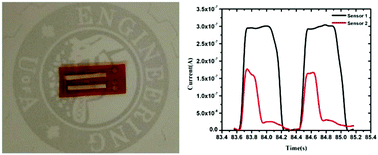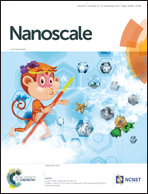Improved response time of flexible microelectromechanical sensors employing eco-friendly nanomaterials†
Abstract
Flexible force/pressure sensors are of interest for academia and industry and have applications in wearable technologies. Most of such sensors on the market or reported in journal publications are based on the operation mechanism of probing capacitance or resistance changes of the materials under pressure. Recently, we reported the microelectromechanical (MEM) sensors based on a different mechanism: mechanical switches. Multiples of such MEM sensors can be integrated to achieve the same function of regular force/pressure sensors while having the advantages of ease of fabrication and long-term stability in operation. Herein, we report the dramatically improved response time (more than one order of magnitude) of these MEM sensors by employing eco-friendly nanomaterials-cellulose nanocrystals. For instance, the incorporation of polydimethysiloxane filled with cellulose nanocrystals shortened the response time of MEM sensors from sub-seconds to several milliseconds, leading to the detection of both diastolic and systolic pressures in the radial arterial blood pressure measurement. Comprehensive mechanical and electrical characterization of the materials and the devices reveal that greatly enhanced storage modulus and loss modulus play key roles in this improved response time. The demonstrated fast-response flexible sensors enabled continuous monitoring of heart rate and complex cardiovascular signals using pressure sensors for future wearable sensing platforms.



 Please wait while we load your content...
Please wait while we load your content...